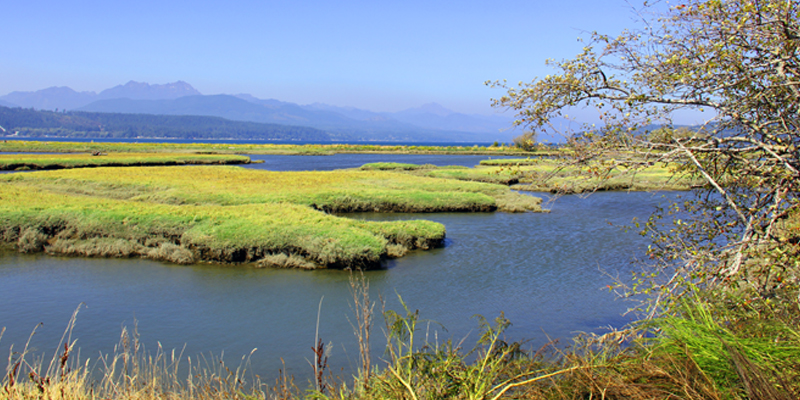
Coastal - Region 6
Customer service staff in the Montesano Regional Office are available for walk-in service 9 a.m. to 4 p.m. Monday through Friday excluding legal holidays.
The Port Townsend District Office is open by appointment only. Please call 360-302-3030 to schedule an appointment.
48 Devonshire Road
Montesano, WA 98563
United States
Fishing tips and news
New to fishing in Washington? Check out our Fish Washington blog post for a guide on how to get started.
Buy your 2024 fishing license
Now that spring has arrived, Washingtonians will need to buy 2024-2025 recreational hunting and fishing licenses. People can buy licenses from WDFW’s licensing website, WDFW regional offices, or hundreds of license vendors around the state.
2023-24 Sport Fishing Rules
The 2023-24 Washington Sport Fishing Rules pamphlet is available online and at license dealers. The updated rules can help anglers make decisions about how to spend their time on the water.
The 2024-25 sport fishing rules and pamphlet are expected in June, and go into effect on July 1, 2024.
Current fishing regulations and emergency Fishing Rule Changes are also available online at wdfw.wa.gov/fishing/regulations.
Coastal razor clam digs tentatively planned into May
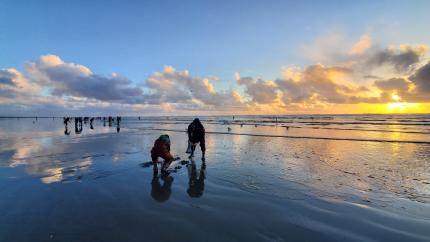
Coastal razor clam digs are tentatively planned through May 12 depending on biotoxin levels. Open beaches may include Long Beach, Twin Harbors, Mocrocks and Copalis, though not all beaches will be open for every dig.
The daily limit is 15 clams per person, and you must keep the first 15 clams you dig, regardless of size or condition. Each digger’s clams must be kept in a separate container.
See our latest news release for more information. Check the razor clam page before heading out to confirm beach openings. Domoic acid toxin levels are tested regularly by WDFW and Department of Health; more information is available on the domoic acid webpage.
WDFW will be at the annual Long Beach Razor Clam Festival May 10-11. The festival will feature clam digging lessons and cleaning demos, a chowder tasting competition, other contests, food trucks, live music, vendors, and children's activities. Learn more at longbeachrazorclamfestival.com.
Recreational spot shrimp fishery opens mid-May
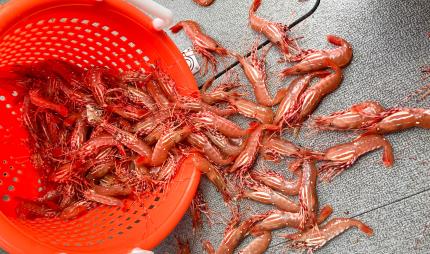
Many Puget Sound marine areas will open for recreational spot shrimp fishing May 16. Hood Canal and Discovery Bay will open May 17.
Overall, the 2024 shrimp season will start with similar opportunities to 2023. Fishery managers selected these dates to offer opportunities to harvest shrimp while distributing participants and reducing the chance of exceeding recreational quotas.
Also known as prawns, spot shrimp are the largest shrimp in Puget Sound and may grow up to nine inches in length. More details, including scheduled and tentative dates as well as regulations, are available in our news release.
Lowland lakes trout fishing, annual trout derby open through October
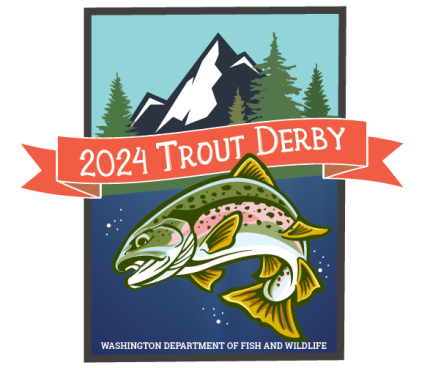
The statewide lowland lakes trout-fishing season is now open. Search for local fishing spots, with information on bank access, what’s in the water, and when it’s biting on our lowland lakes page. You can also find out how many fish were stocked in each lake by checking the stocking reports.
WDFW's annual statewide trout derby at more than 100 stocked lakes runs through Oct. 31. Over 100 businesses are offering more than 800 prizes valued at over $42,000. There is no entrance fee or registration required; just catch a tagged trout during this timespan and you win!
Coastal recreational bottomfishing now open
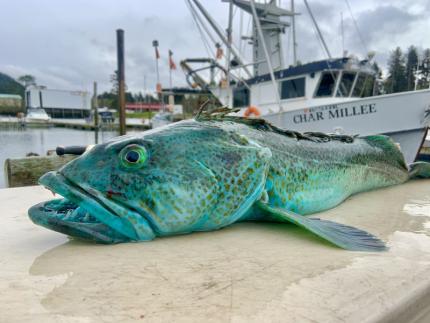
Recreational coastal bottomfishing season is now open. Learn more and review regulations in our news release.
Bottomfish regulations remain the same as in 2023. Anglers are reminded that possession of copper rockfish, quillback rockfish, and vermilion rockfish will be prohibited in May, June, and July, when peak effort for bottomfish occurs.
Yelloweye rockfish retention is prohibited in all areas of Washington and yelloweye rockfish must be released. Anglers are reminded that a descending device must be on board vessels and rigged for immediate use when fishing for or possessing bottomfish and halibut. Information about descending devices can be found on WDFW’s webpage.
A bottomfish limit doesn’t include halibut, which have a daily limit of one halibut and separate fishing seasons depending on marine area. See our halibut news release for more information.
Surfperch and shiner perch are not part of the bottomfish limit in coastal marine areas. Surfperch has a daily limit of 12 and shiner perch has a daily limit of 15 with no minimum size restriction. Fishing is open through the third Saturday in October except fishing for surfperch is open year-round from the beach.
Fishing for, retaining or possessing sixgill, sevengill, and thresher sharks is closed in all marine areas. A sixgill shark may not be removed from the water.
2024 clam and oyster seasons underway
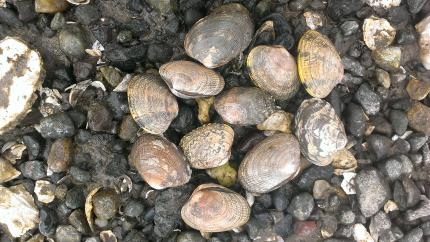
With the return of spring and daytime low tides, many of Washington’s clam and oyster beaches are now open or will soon reopen for recreational shellfish gathering.
State clam, mussel, and oyster harvesting seasons vary by beach. Regulations and season dates as well as shellfishing tips are available at wdfw.wa.gov/places-to-go/shellfish-beaches.
Shellfishing at Kopachuck State Park will remain closed for the 2024 season due to a planned park improvement project led by Washington State Parks. The park will be closed to the public while work is completed. Project timelines are still in development. Please visit the park’s webpage for updates.
For more details, including rules and regulations, see our news release.
Washington shellfish account for thousands of jobs, provide myriad recreational opportunities, and are culturally significant to many people. The aquaculture industry here is the leading producer of shellfish in the United States!
We have also partnered with the Washington Invasive Species Council on the Safeguard Our Shellfish campaign to protect Washington's shellfish against invasive species and diseases.
Hunting opportunities and news
For an overview of hunting in Washington and how to get started, visit our Hunt Washington blog post.
2023-25 Hunting Regulations
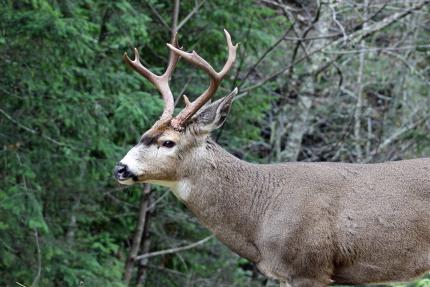
The 2023-24 Game Bird and Small Game Hunting Regulations and 2024-25 Big Game Hunting Regulations pamphlets are available online and at hundreds of license dealers around the state. The updated rules can help hunters make decisions about how to spend their time in the field.
Current hunting regulations are also available online at wdfw.wa.gov/hunting/regulations.
Buy your 2024 hunting license
Now that spring has arrived, Washingtonians will need to buy 2024-2025 recreational hunting and fishing licenses. People can buy licenses from WDFW’s licensing website, WDFW regional offices, or hundreds of license vendors around the state.
Special hunt applications now available
Multi-season deer and elk tags allow you to hunt archery, muzzleloader, and modern firearm seasons, while special hunt permits offer opportunities such as hunting outside general seasons, all increasing your chances for success. Learn more, including details on the May 15 special hunt application deadline, at myWDFW.com.
Wild turkey hunting runs through May 31
The statewide spring wild turkey hunting season runs through May 31 for the general season. For additional details, visit the wild turkey hunting webpage. Most Western Washington turkey hunters travel to eastern, northeastern, or southwest Washington, as there are few wild turkeys in the Coastal Region.
New, prospective hunters must complete hunter education
Before hunting seasons start, be sure to complete your hunter education course.
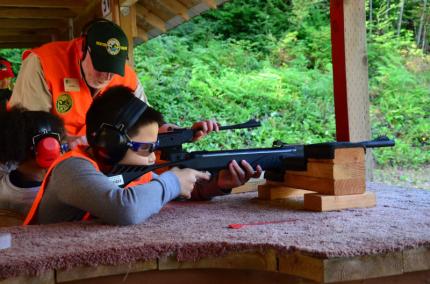
Students may choose between a traditional classroom or hybrid course. The traditional course is a multi-session instructor-led training with an average of 15 hours of instruction. The hybrid course consists of a self-paced online class followed by a field skills evaluation by certified instructors.
Prospective hunters can learn more about hunter education requirements and register for either a traditional or hybrid course by visiting WDFW’s hunter education webpage.
Per Washington state law, all hunters born after Jan. 1, 1972, must complete a hunter education course in order to buy a hunting license. A hunter education deferral is available for hunters 10 and older who want to try hunting with an eligible licensed hunter before completing a hunter education course themselves.
WDFW offers accessible hunting and wildlife-viewing blinds
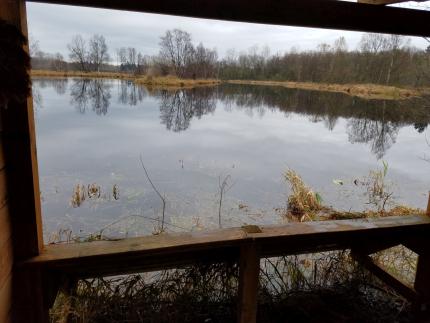
Did you know WDFW offers hunting and wildlife-viewing blinds and platforms throughout Washington that are accessible to people with disabilities? Learn about these Americans with Disabilities Act (ADA) designated sites at wdfw.wa.gov/accessibility/hunting-and-wildlife-viewing-blinds.
Some sites can be reserved through WDFW's Private Lands Hunting Access program. Others can be reserved by calling the wildlife area manager.
Hunters without disabilities should yield ADA hunting and wildlife-viewing blinds and platforms to those with disabilities if the site was reserved.
Many of these ADA hunting and wildlife-viewing blinds and platforms are built and maintained with support from volunteers, master hunters, and partners including Inland Northwest Wildlife Council and Washington Waterfowl Association. Thank you!
Wildlife watching and recreation
Find more tips on our wildlife viewing webpage.
Warmer weather brings many wildlife viewing opportunities
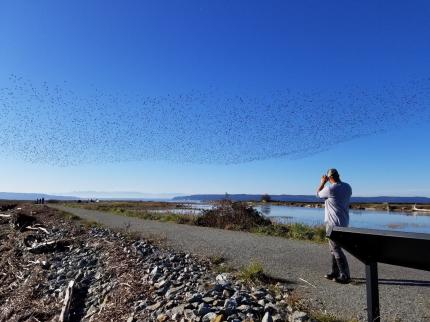
There’s always wildlife to watch across the state. Check out the Great Washington State Birding Trail for maps to find birds and enjoy time outside. Spotting even more animals like mountain goats, moose, or marmots while out on your adventures? When viewing all wildlife, be sure to follow responsible and ethical viewing and photography practices to have a safe and enjoyable experience. More information on wildlife viewing — including how to get started — can be found on our webpage.
Hitting the rocky slopes this summer? Hike and help pikas! With the simple click of a button, you can record pikas to WDFW’s researchers who are observing them for effects of climate change. Learn more about this project and the simple steps you can take to help by reading our blog.
You can catch spectacular shorebirds and WDFW staff getting birdy at the annual Grays Harbor Shorebird and Nature Festival May 3-5 at Hoquiam Middle School, 200 Spencer St. Each spring, hundreds of thousands of shorebirds stop to rest and feed along the Washington Coast and in the Grays Harbor estuary as they migrate north. This annual festival includes bird viewing, presentations, vendors, and family activities.
Handicap Hole Water Access Area closed for redevelopment
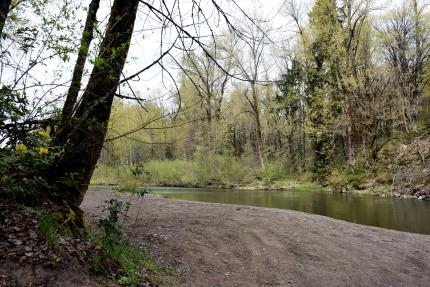
Help protect wildlife by keeping dogs leashed
With summer right around the corner, now’s the time to get out and enjoy Washington’s great outdoors. Also during this time, does are giving birth to fawns, ground-nesting birds are tending to their eggs and young chicks, and sensitive plants are growing to provide food and habitat for wildlife.
If you have a canine companion, chances are they’re eager to join you outdoors, too. While dogs are welcome at WDFW wildlife areas and water access areas, please keep in mind that they must be leashed through July 31. Learn more about how this helps to protect habitat, wildlife, and people in our 2022 blog post.
Wild neighbors: what to do if you encounter young wildlife
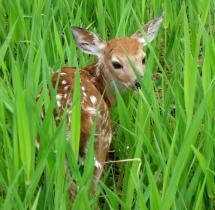
April is a busy month for the birth of baby animals. If you find fawns, baby birds, or other young animals, please leave them be, even if they appear to be orphaned or abandoned. Most animals have a parent foraging or hunting nearby. Read our blog to learn about when not to rescue wildlife and what to do if you encounter certain species.
For wildlife that do require care, WDFW relies on permitted rehabilitators. Rehabilitators are trained and highly skilled in providing the unique attention needed for injured or orphaned wildlife, and care deeply for the animals entrusted to them.
Visit our website to learn more about Washington’s wildlife rehabilitators and find one near you. Remember to thank the rehabilitators in your region for the important work they do on behalf of our state’s wildlife!
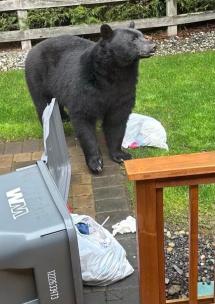
Practice black bear awareness this spring
Black bears are common throughout Washington, including suburban areas. Both when preparing for hibernation and awakening from it, they look for high-calorie foods that are easy to get. These may include garbage, bird feeders (both seed and liquid), fruit trees, and pet food.
As human populations encroach on bear habitat, people and bears have greater chances of encountering each other. Food sources provided by humans, whether intentionally or not, can attract bears. Removing these attractants is the best way to encourage bears to move along and focus on natural food sources
Ask your local waste management company if bear-resistant containers are available or if individually purchased bear-resistant containers are compatible with the company’s equipment. Secure your garbage cans, such as in a shed or garage, and put them out the morning of pickup — not the night before. To help reduce odors, freeze meat and fish waste before disposing of it and spray garbage cans with disinfectants.
More information on living with bears is available on our website.
Conserving species and habitats
Looking for more info on wildlife conservation and species management around Washington? Check out our Bi-Weekly Wildlife Program reports.
Duckabush restoration project open house May 4
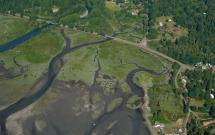
Learn more about the Duckabush Estuary Restoration Project in Jefferson County at an in-person open house from 10 a.m. to noon May 4 at the Brinnon Community Center, 306144 U.S. 101.
Attendees are welcome to drop in anytime during the two-hour open house to visit stations detailing various elements of the project. Representatives from WDFW, the U.S. Army Corps of Engineers, Washington State Department of Transportation, and Hood Canal Salmon Enhancement Group will be available to answer questions.
The project will reconnect the Duckabush River to neighboring floodplains and wetlands by modifying local roads, elevating U.S. 101 to an estuary-spanning bridge, and reconnecting historical tidal and river channels. Check out our news release for more information.
Help protect snowy plovers when recreating on the beach
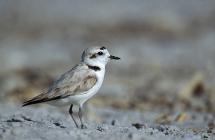
Snowy plover breeding season runs until mid-September. During this time, WDFW asks all beach visitors to respect closure areas and signs indicating snowy plover nesting habitat. Please also avoid throwing food or trash on the beach, as this can attract predators, and follow the beach speed limit of 25 miles per hour.
Native to Washington, western snowy plovers are listed as state endangered and as federally threatened under the Endangered Species Act. Learn more about these rare shorebirds in our blog post.
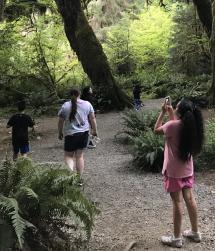
Wild Washington Youth Education
Spring is a great time to explore your neighborhood and discover the habitat needs of local wildlife. Did you know that wildlife often use entire neighborhoods to access essential resources such as food, water, shelter, and space?
To understand how your neighborhood supports local wildlife, we’ve put together a scavenger hunt for you and your family to find and identify different elements of wildlife habitat in your community. The hunt will have you search for elements like trees, shrubs, bird feeders, bird and bat houses, and water sources like streams or ponds.
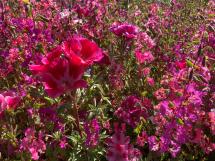
Habitat at Home: Making your lawn wildlife-friendly
Support wildlife, mow less, and conserve water by transforming your lawn! Grassy lawns have replaced healthy wildlife habitat and contribute to water shortages across Washington.
Transforming your lawn into a native wildflower meadow creates habitat for pollinators, birds, and bats. Plus, the native plants need much less water than a conventional lawn!
Submit comments on bald eagles, peregrine falcons
WDFW is seeking public input on its draft periodic status reviews for the bald eagle and peregrine falcon.
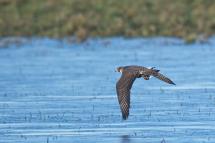
Both species have previously been removed from Washington’s list of state endangered species due to population recovery in the state. Based on the latest available information, WDFW biologists recommend that both birds retain their status as successfully recovered.
The public comment periods for the bald eagle and peregrine falcon draft status reviews are open through May 27. The Washington Fish and Wildlife Commission is tentatively scheduled to consider these topics in June. Learn more in our news release.
Please report suspected European green crabs
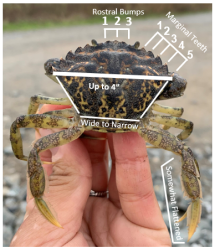
Our Aquatic Invasive Species (AIS) unit recently received a report from a concerned member of the public who claimed to have collected nine invasive European green crabs from a Hood Canal beach. Upon reviewing their photos, we quickly determined these were in fact helmet crabs, a common native species unlawful to kill or retain.
While we appreciate their concern about invasive species, the reporting party was reminded to photograph and report suspected European green crabs using the form at wdfw.wa.gov/greencrab, leaving the crab in question where it was found.
Incidents like this are one reason why WDFW has not yet opened recreational harvest for European green crabs in Washington. Other reasons include restrictions on access to private tidelands and shellfish beds, and concerns about bycatch of protected fish and shellfish, especially if traps are exposed during low tide. Read more in our blog post.
Wildlife Program biweekly reports
To read reports published prior to 2023, visit the Biweekly Wildlife Program activity reports page.
Regional Director: Heather Hall
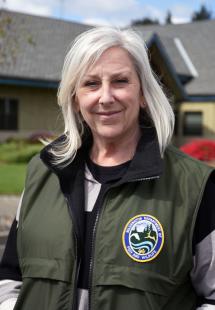
Heather Hall will assume the role of Coastal Washington (Region 6) Director on May 1, 2024.
Heather is excited to return to Region 6, where she began her career at WDFW in 1995. Most recently, she served as Intergovernmental Ocean Policy Manager, overseeing state fisheries and fisheries extending into federal waters.
Heather is committed to public service. She brings expertise to her new role ranging from fieldwork to policymaking, giving her a unique perspective on fish and wildlife management in the Coastal Region.
Heather holds a bachelor’s degree in science from Western Washington University. In her free time, she enjoys recreating along the Washington coast, including kayaking, standup paddleboarding, crabbing, and gathering oysters on Hood Canal.